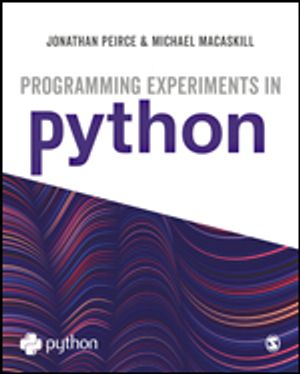Python is a free, open-source, cross-platform programming language that allows a great deal to be accomplished in very few lines of code. As well as having a powerful, flexible syntax, Python can interface easily with other libraries and hardware on any computer system, making it ideal for interacting with additional devices hardware (e.g. for fMRI, EEG, eye tracking etc.). Python has become the go-to language for a wide variety of behavioural science studies and experiments.
Aimed at advanced undergraduate students, postgraduate students and professional scientists, this textbook provides a comprehensive guide to enable readers to write experiments in Python, or using Python within PsychoPy. This text offers a more advanced guide to developing psychological experiments in Python and can be used as a guide to using software and hardware together – for example, programming a psychological experiment using eye tracking software or EEG systems. Highly practical in nature, the book shows how to programme one full experiment and how to analyse data and scripting.
Read together with
Building Experiments in PsychoPy, this text is designed to support students who are familiar with PsychoPy and how want to progress into programming in the original software package Python (on which PsychoPy is built). It will help advanced students to programme directly in Python and support them when they use hardware in their experiments, and it particularly suited to those students programming experiments in cognitive psychology and neuroscience.
